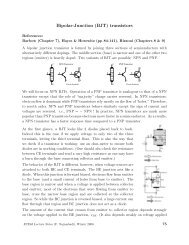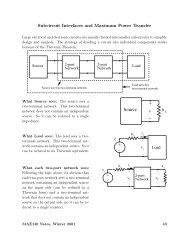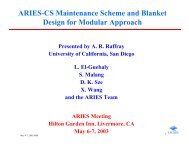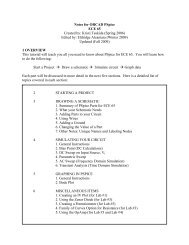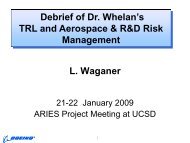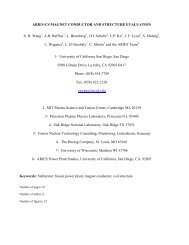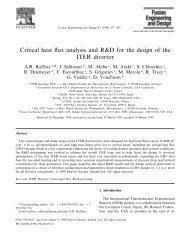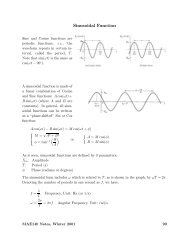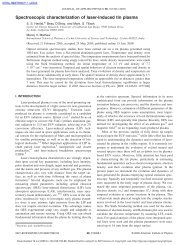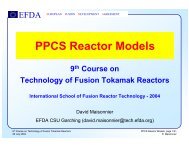TECHNOLOGY READINESS LEVELS A White Paper April 6 ... - NASA
TECHNOLOGY READINESS LEVELS A White Paper April 6 ... - NASA
TECHNOLOGY READINESS LEVELS A White Paper April 6 ... - NASA
Create successful ePaper yourself
Turn your PDF publications into a flip-book with our unique Google optimized e-Paper software.
TRL 4<br />
Component and/or breadboard validation in laboratory<br />
environment<br />
Following successful “proof-of-concept” work, basic technological elements must be<br />
integrated to establish that the “pieces” will work together to achieve concept-enabling<br />
levels of performance for a component and/or breadboard. This validation must devised to<br />
support the concept that was formulated earlier, and should also be consistent with the<br />
requirements of potential system applications. The validation is relatively “low-fidelity”<br />
compared to the eventual system: it could be composed of ad hoc discrete components in<br />
a laboratory. For example, a TRL 4 demonstration of a new ‘fuzzy logic’ approach to<br />
avionics might consist of testing the algorithms in a partially computer-based, partially<br />
bench-top component (e.g., fiber optic gyros) demonstration in a controls lab using<br />
simulated vehicle inputs.<br />
Cost to Achieve: Low-to-moderate ‘Unique’ Cost<br />
(investment will be technology specific, but probably<br />
several factors greater than investment required for TRL 3)<br />
TRL 5<br />
Component and/or breadboard validation in relevant<br />
environment<br />
At this, the fidelity of the component and/or breadboard being tested has to increase<br />
significantly. The basic technological elements must be integrated with reasonably realistic<br />
supporting elements so that the total applications (component-level, sub-system level, or<br />
system-level) can be tested in a ‘simulated’ or somewhat realistic environment. From oneto-several<br />
new technologies might be involved in the demonstration. For example, a new<br />
type of solar photovoltaic material promising higher efficiencies would at this level be used<br />
in an actual fabricated solar array ‘blanket’ that would be integrated with power supplies,<br />
supporting structure, etc., and tested in a thermal vacuum chamber with solar simulation<br />
capability.<br />
Cost to Achieve: Moderate ‘Unique’ Cost<br />
(investment cost will be technology dependent, but likely to be several factors<br />
greater that cost to achieve TRL 4)<br />
TRL 6<br />
System/subsystem model or prototype demonstration<br />
in a relevant environment (ground or space)<br />
A major step in the level of fidelity of the technology demonstration follows the completion<br />
of TRL 5. At TRL 6, a representative model or prototype system or system — which would<br />
go well beyond ad hoc, ‘patch-cord’ or discrete component level breadboarding — would<br />
be tested in a relevant environment. At this level, if the only ‘relevant environment’ is the<br />
environment of space, then the model/prototype must be demonstrated in space. Of<br />
028



